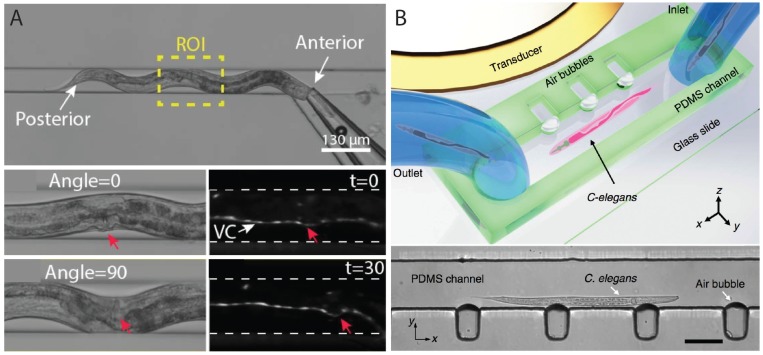Figure 5.
Microfluidic devices for multidirectional orientation and imaging of C. elegans using (A) rotatable glass capillaries (Ardeshiri et al. [54] and (B) acoustofluidic rotational manipulation (ARM) (Ahmed et al. [55]. Panel (B) reproduced with permission from Adapted by permission from Macmillan Publishers Ltd. Nature Communications. Panel (A) shows an adult worm inside the channel with the region of interest (ROI) in the middle. The worm is held by the negative pressure in the glass capillary. The two sets of brightfield and fluorescent images below show pre- and post-rotated views of specific neuronal processes (VC). Schematic view of the ARM device (B). It contains a piezoelectric transducer to generate acoustic waves. Air bubbles within sidewall cavities cause worms to rotate. The image below shows a mid-L4 worm trapped by oscillating bubbles. Refer to respective references for device details.

